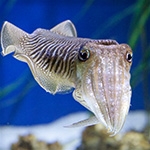One wise person in this forum suggested I tackle my concerns in little parts. Thats been hard as I've wanted to solve Everything, Immediately. Understanding and tinkering with settings has been a big part of my steps toward success. I will continue on both things there. My current question is a common one. What is a good position to sleep in to reduce the dreaded aerophagia? I have seen a clip of a guy who showed keeping the chin tucked in, close to the chest. I have also read the complete opposite which stated that you should have a greater distance and open up the angle between chest and chin.
I realize what works for one person is not going to work for all, still I'm tossing this out there for opinions.
dissecting the elephant / tackling the aerophagia is next
- HopingForSuccess
- Posts: 14
- Joined: Sat Aug 23, 2014 12:45 pm
- ChicagoGranny
- Posts: 15354
- Joined: Sun Jan 29, 2012 1:43 pm
- Location: USA
Re: dissecting the elephant / tackling the aerophagia is next
I guess this could differ from person to person, but for me aerophagia is nonexistent on my back, mild on my right side and moderate on my left side.What is a good position to sleep in to reduce the dreaded aerophagia?
But first, how is the CPAP therapy working? Are you tracking it with one of the softwares? What are your results? What does your leak line look like? AHI? Pressure line? Do you have dry mouth? Do you have mask leak? What humidifier setting are you using?
When the therapy doesn't work well, some people will experience worse aerophagia.
"It's not the number of breaths we take, it's the number of moments that take our breath away."
Cuando cuentes cuentos, cuenta cuántas cuentos cuentas.
Cuando cuentes cuentos, cuenta cuántas cuentos cuentas.
-
sawinglogz
- Posts: 400
- Joined: Mon Aug 27, 2012 12:53 pm
Re: dissecting the elephant / tackling the aerophagia is next
The big differentiator for me is tackling the LPR.
When my reflux is under control, I have far less aerophagia. When it's not, not.
The big things for me were avoiding food or drink for 3 hours before bed, and avoiding my 5000-IU vitamin D supplements.
(Sadly, no supplements at all left me D deficient, and when I tried half as many 5000-IU supplements, the reflux came raging back, so now I'm experimenting with 1000-IU.)
Digression for those on bi-level (not the OP):
I also experimented with lowering the timing of my ASV's backup breathing, but after an initial improvement, it doesn't seem to help, at least not by itself. My theory was that when it bumped up the pressure when I wasn't ready to breathe, it was pushing more air down my esophagus. "Auto" wanted to keep my breathing steadier than I needed (breathing naturally slows down when I wake up, or after a particularly vivid dream in which breathing was faster), and indeed my percentage of patient-triggered breaths did increase, still with 0 centrals. But I still woke up one night feeling pretty full of air, and the next night very refluxy.
It may in fact be that the more regimented breathing due to "auto" keeps my airway from relaxing quite as much, so it could (counterintuitively) be slightly better for aerophagia. Or it may be that the reduced rate would help if my LPR weren't flaring up. I'll review my data this weekend to get a better picture.
When my reflux is under control, I have far less aerophagia. When it's not, not.
The big things for me were avoiding food or drink for 3 hours before bed, and avoiding my 5000-IU vitamin D supplements.
(Sadly, no supplements at all left me D deficient, and when I tried half as many 5000-IU supplements, the reflux came raging back, so now I'm experimenting with 1000-IU.)
Digression for those on bi-level (not the OP):
I also experimented with lowering the timing of my ASV's backup breathing, but after an initial improvement, it doesn't seem to help, at least not by itself. My theory was that when it bumped up the pressure when I wasn't ready to breathe, it was pushing more air down my esophagus. "Auto" wanted to keep my breathing steadier than I needed (breathing naturally slows down when I wake up, or after a particularly vivid dream in which breathing was faster), and indeed my percentage of patient-triggered breaths did increase, still with 0 centrals. But I still woke up one night feeling pretty full of air, and the next night very refluxy.
It may in fact be that the more regimented breathing due to "auto" keeps my airway from relaxing quite as much, so it could (counterintuitively) be slightly better for aerophagia. Or it may be that the reduced rate would help if my LPR weren't flaring up. I'll review my data this weekend to get a better picture.
- ChicagoGranny
- Posts: 15354
- Joined: Sun Jan 29, 2012 1:43 pm
- Location: USA
Re: dissecting the elephant / tackling the aerophagia is next
What time of day do you take it?sawinglogz wrote: when I tried half as many 5000-IU supplements, the reflux came raging back, so now I'm experimenting with 1000-IU.)
"It's not the number of breaths we take, it's the number of moments that take our breath away."
Cuando cuentes cuentos, cuenta cuántas cuentos cuentas.
Cuando cuentes cuentos, cuenta cuántas cuentos cuentas.
- Sir NoddinOff
- Posts: 4190
- Joined: Mon May 14, 2012 5:30 pm
- Location: California
Re: dissecting the elephant / tackling the aerophagia is next
I'm not sure there's a consensus on that topic. Some people like their chin-tucked-in approach and at the other end of the spectrum some folks resort to cervical collars to keep the chin up. The vast majority I suspect tend to fall in the middle somewhere. I've just learned to live with my mild areophagia and take a few Tums if it gets too annoying... IOW, it rarely wakes me up.HopingForSuccess wrote:What is a good position to sleep in to reduce the dreaded aerophagia? I have seen a clip of a guy who showed keeping the chin tucked in, close to the chest. I have also read the complete opposite which stated that you should have a greater distance and open up the angle between chest and chin.
_________________
| Mask: AirFit™ F10 Full Face Mask with Headgear |
| Additional Comments: Sleepyhead software v.0.9.8.1 Open GL and Encore Pro v2.2. |
I like my ResMed AirFit F10 FFM - reasonably low leaks for my ASV therapy. I'm currently using a PR S1 AutoSV 960P Advanced. I also keep a ResMed S9 Adapt as backup. I use a heated Hibernite hose. Still rockin' with Win 7 by using GWX to stop Win 10.
- chunkyfrog
- Posts: 34545
- Joined: Mon Jul 12, 2010 5:10 pm
- Location: Nowhere special--this year in particular.
Re: dissecting the elephant / tackling the aerophagia is next
When I had the problem, lying on my left side stopped it.
The theory is that our internal plumbing is arranged so it is better in that position.
I never paid attention to my chin, just figured it would do whatever it liked once I fell asleep.
Of course, it is just a theory--worked for me, but I'm a little different.
The theory is that our internal plumbing is arranged so it is better in that position.
I never paid attention to my chin, just figured it would do whatever it liked once I fell asleep.
Of course, it is just a theory--worked for me, but I'm a little different.
_________________
| Mask: AirFit™ P10 For Her Nasal Pillow CPAP Mask with Headgear |
| Additional Comments: Airsense 10 Autoset for Her |
Re: dissecting the elephant / tackling the aerophagia is next
I suggest adopting different sleeping positions and keeping a journal to see what works best. Be a good scientist and tell us what worked best for you.
ResMed AirCurve 10 ASV
8 years with F&P Oracle mouth mask now changing to
F&P Evora Full with S-M size
Hozer hose management device (a miracle!)
OSCAR software
8 years with F&P Oracle mouth mask now changing to
F&P Evora Full with S-M size
Hozer hose management device (a miracle!)
OSCAR software











